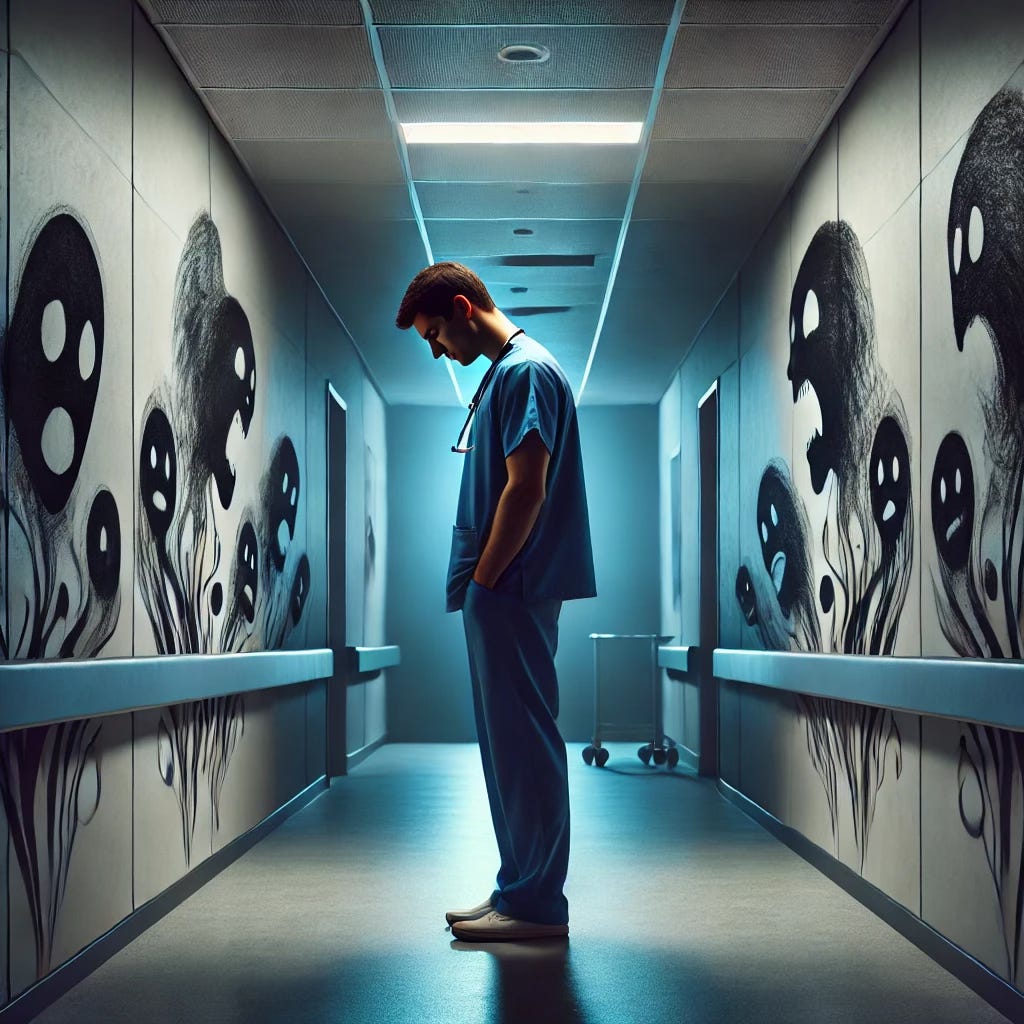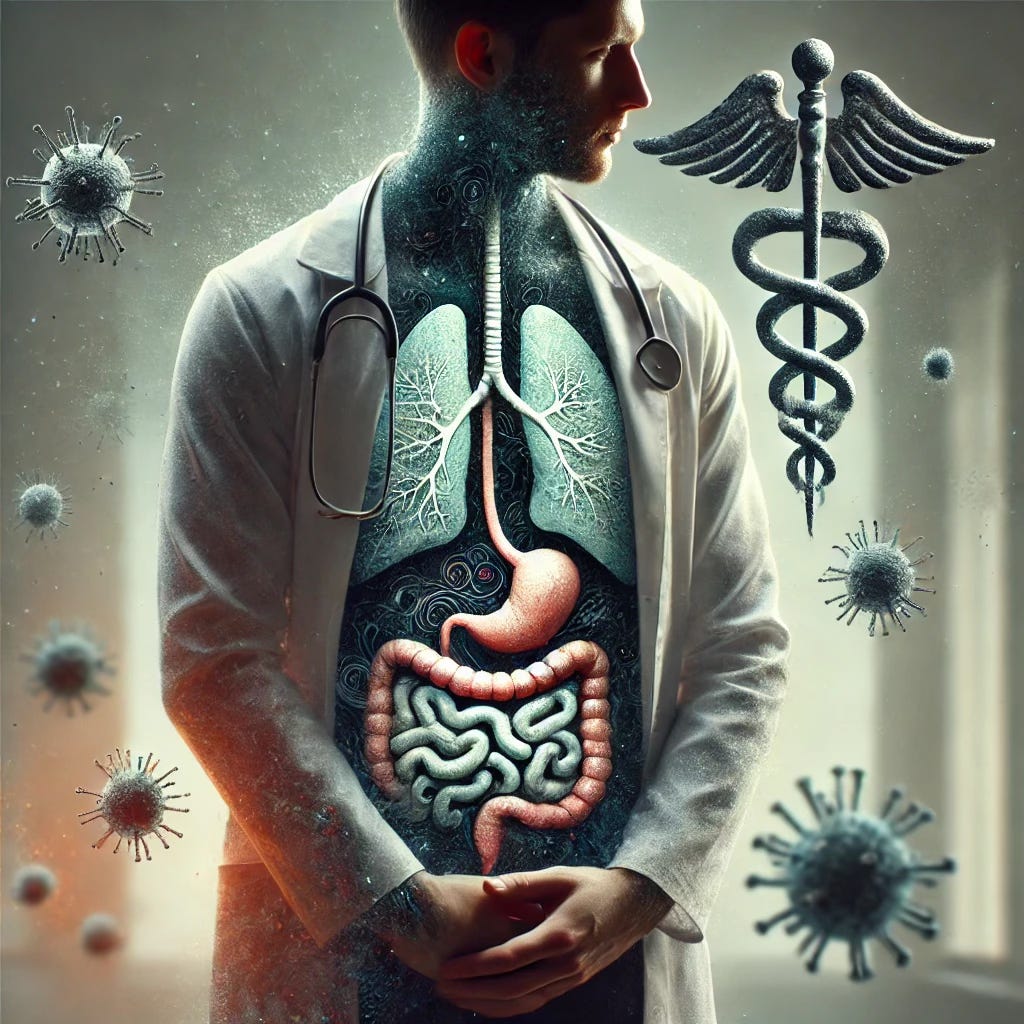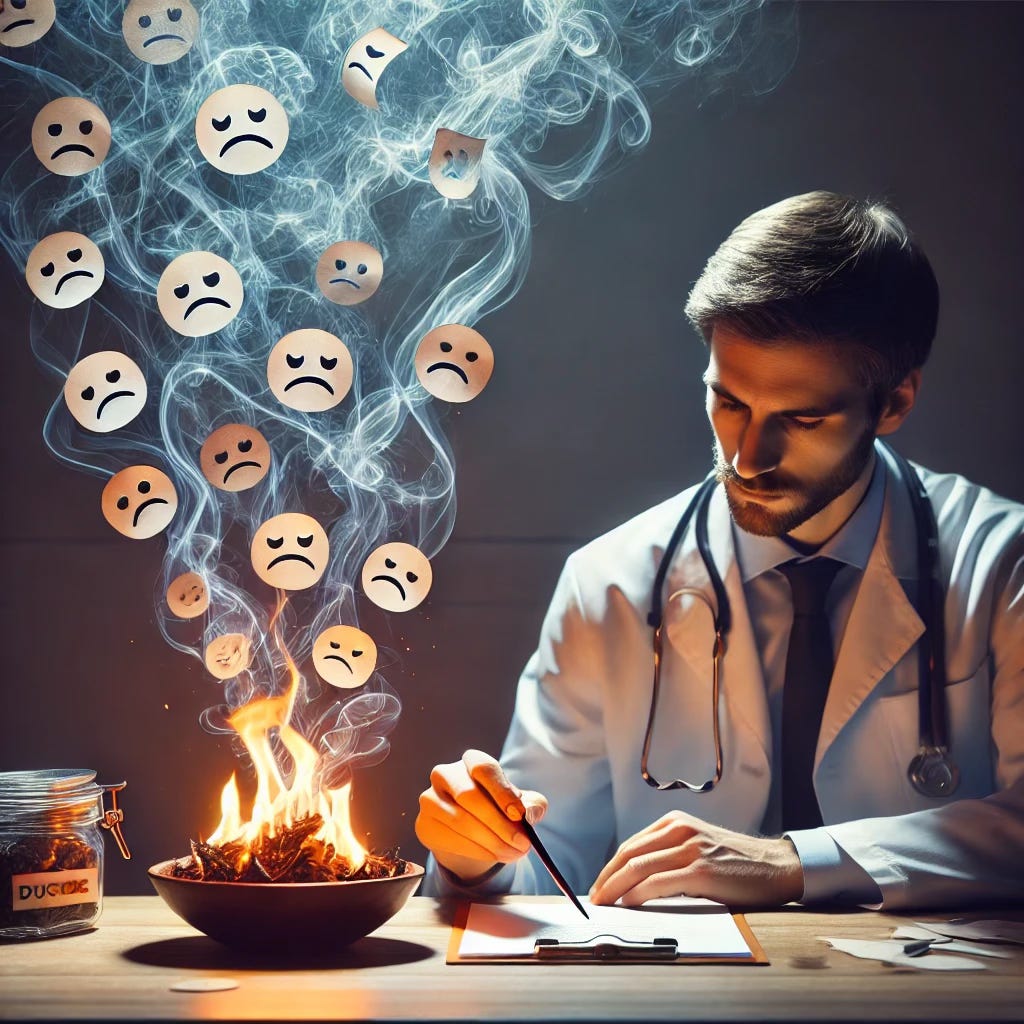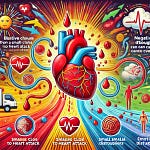The Invisible Foes of the ICU
Working in an ICU means being constantly surrounded by invisible threats. Every doctor who’s been through a night shift knows the fear that comes with direct exposure to dangerous infections. I remember the day one of my residents had a direct exposure to respiratory secretions from a patient with HIV. The shock, fear, and anxiety were immediate. Despite knowing the statistical odds were low, that knowledge didn’t reduce the overwhelming emotional response.
ICU doctors know the risks we face—especially when working with multi-drug resistant organisms (MDR). We know how easily these infections can spread, not just to us but also to the patients. Personally, I've seen doctors prepare themselves mentally for battle, much like soldiers. They suit up in their PPE, but despite the armor, the uncertainty of invisible threats lingers. It’s easy to get caught in spiraling thoughts—What if it’s me next? What if my family suffers?
The pandemic of fear was especially intense during COVID-19. Doctors were terrified of being silent vectors, potentially carrying the virus home to loved ones. The smallest breach in PPE became a source of intense anxiety. The invisible microorganisms threatened not just our bodies but our minds, gnawing at our mental well-being.
Yet, through this experience, I learned that the real battle was not just the virus but the fear and uncertainty it triggered. Much like invisible infections, there are emotional and mental “viruses” that creep into our lives unnoticed.
The Fear We Can’t Escape
As doctors, we know how to treat infections. We prescribe antibiotics, isolate patients, and follow strict hygiene protocols. But what happens when the infection is emotional? What do we do when the real contagion is anger, fear, guilt, or shame? These invisible enemies don’t just attack our physical bodies—they silently consume our emotional health.
Take, for example, the emotions I faced during my residency. One night, after an exhausting shift, I failed to properly follow up with a lower GI bleed patient. The patient passed away overnight. The physical exhaustion was immense, but nothing compared to the emotional weight of that failure. I was overwhelmed by guilt, feeling that I could have done better if I had pushed through my tiredness.
That moment made me realize how deeply our emotional health impacts our professional decisions. The fear, guilt, and shame we carry aren’t always visible, but they weigh us down—much like the invisible threats in the ICU.
Identifying Your Internal Infection
Just as doctors learn to recognize the subtle signs of infection in a patient, we need to develop the skills to recognize the signs of emotional infections in ourselves. For me, I noticed the way anger would creep into my life—triggering emotional reactions and affecting my physical health. I would experience weight gain during stressful periods, digestive issues, and skin problems, all of which were rooted in unresolved emotional tension.
Recognizing these signs was like discovering an invisible pathogen wreaking havoc on my life. I had to confront it head-on. Much like how we deal with infections in patients, I had to find the root cause and treat it accordingly.
Healing the Invisible: My Emotional “Burn” Protocol
During this period, I was guided by one of my mentors, who introduced me to a practice that became a cornerstone of my healing: the emotional dump and burn exercise. Each day, I would write down every trigger, every anger-inducing moment, and then burn the paper. At first, it seemed too simple, too abstract for someone like me—a doctor accustomed to data and evidence.
But with time, I noticed the emotional weight lifting. I wasn’t conquering anger, but I was becoming aware of it, processing it, and letting it go in a healthier way. The exercise became my **emotional protocol**—a way to sanitize myself from the invisible emotional “germs” that were hindering my personal growth.
What Are Your Invisible Enemies?
I invite you to take a moment to introspect. What invisible infections—whether physical, emotional, or mental—are holding you back? What’s lurking beneath the surface, silently eroding your energy and peace of mind?
Consider these questions:
- Have you faced an invisible enemy, either in your personal life or professional career?
- What emotional or mental “infections” are you carrying that you’ve ignored for too long?
- How do you handle the fear of the unseen? Whether it's the fear of exposure to infections in your work or the fear of failure, how do you respond?
The Path to Healing
Just like we take precautions against physical infections, we need to create protocols to guard against **emotional and mental infections**. This could be a daily journaling practice, a regular conversation with a trusted mentor, or mindfulness techniques that keep us grounded.
In the ICU, I learned to isolate myself emotionally from my patients’ suffering. But I also learned the value of reconnecting with myself through emotional awareness. The most dangerous infections are often the ones we don’t see—and the same is true for our emotional well-being. We need to keep looking inward and constantly seek out ways to grow and heal.
The havoc caused by invisible organisms in the ICU mirrors the havoc caused by invisible emotions in our lives. Both are subtle, often undetectable, yet capable of profound damage. Just as we need to address physical infections with vigilance and care, we must address our emotional health with the same dedication.
My challenge to you is simple: identify your invisible enemies, face them, and create your personal protocol to overcome them. It’s time to face the unseen and become the healthiest version of yourself—inside and out.
Do comment on your insights below .
Stay balanced and stay healthy,
Dr.Krishna Bharath , MD

















